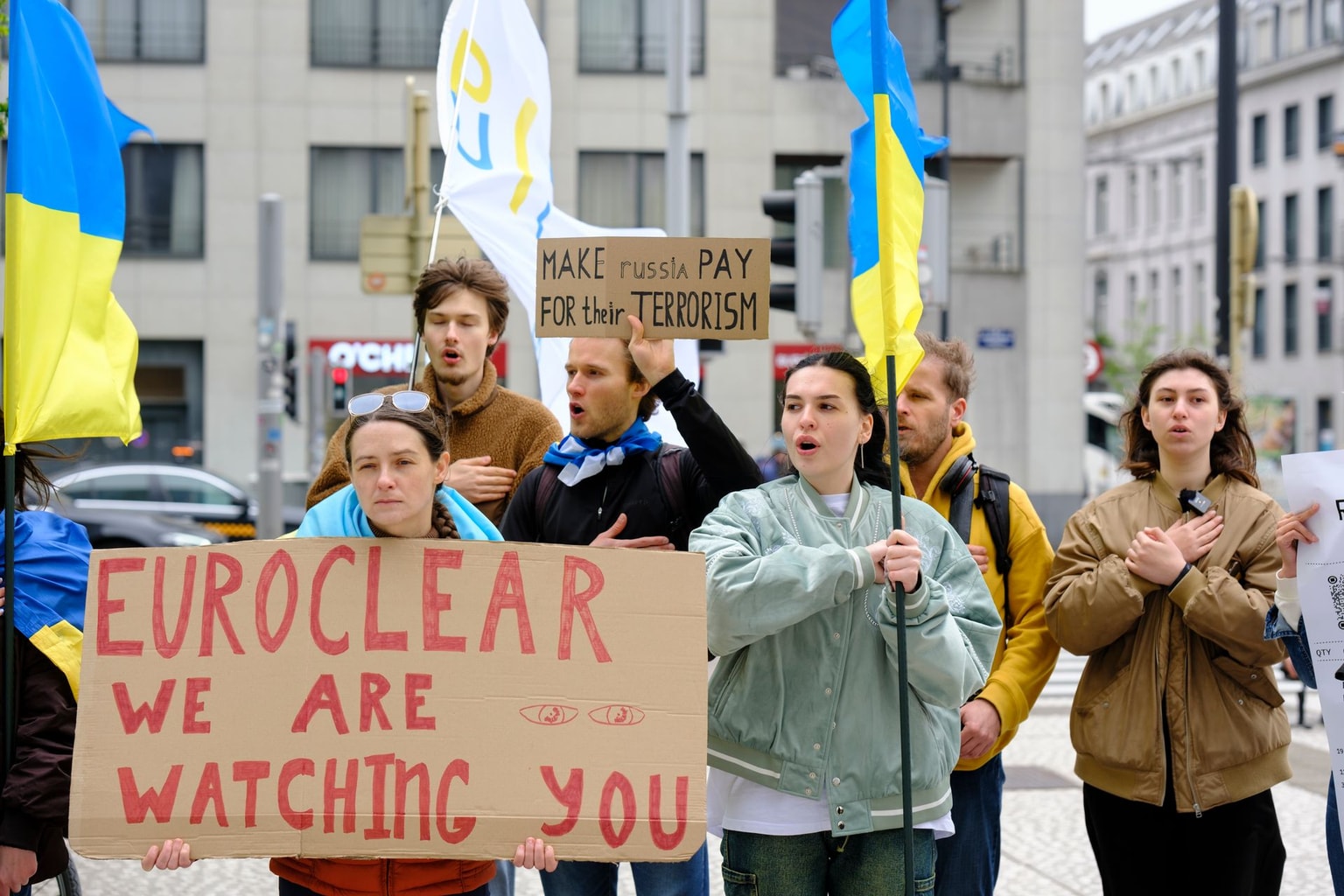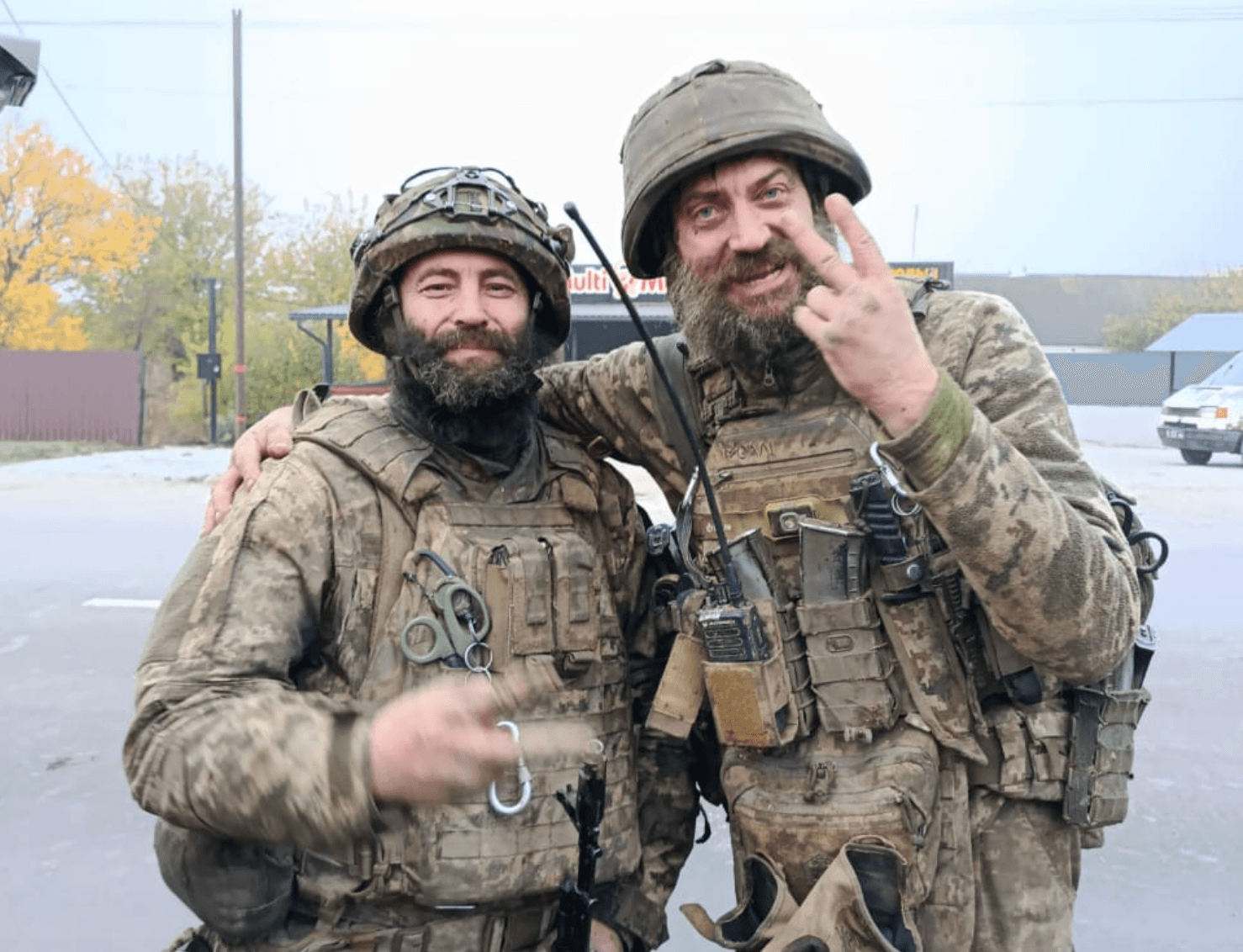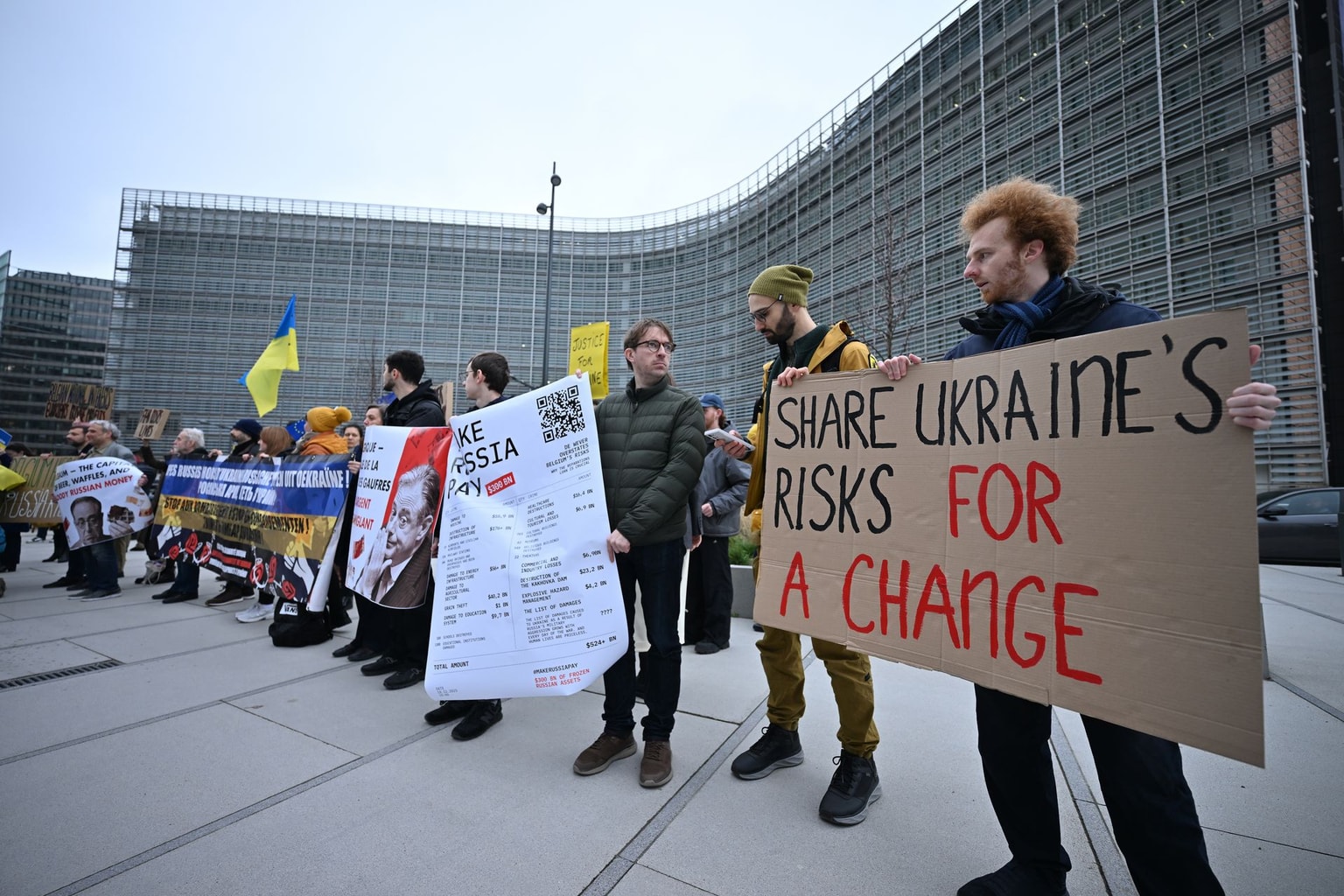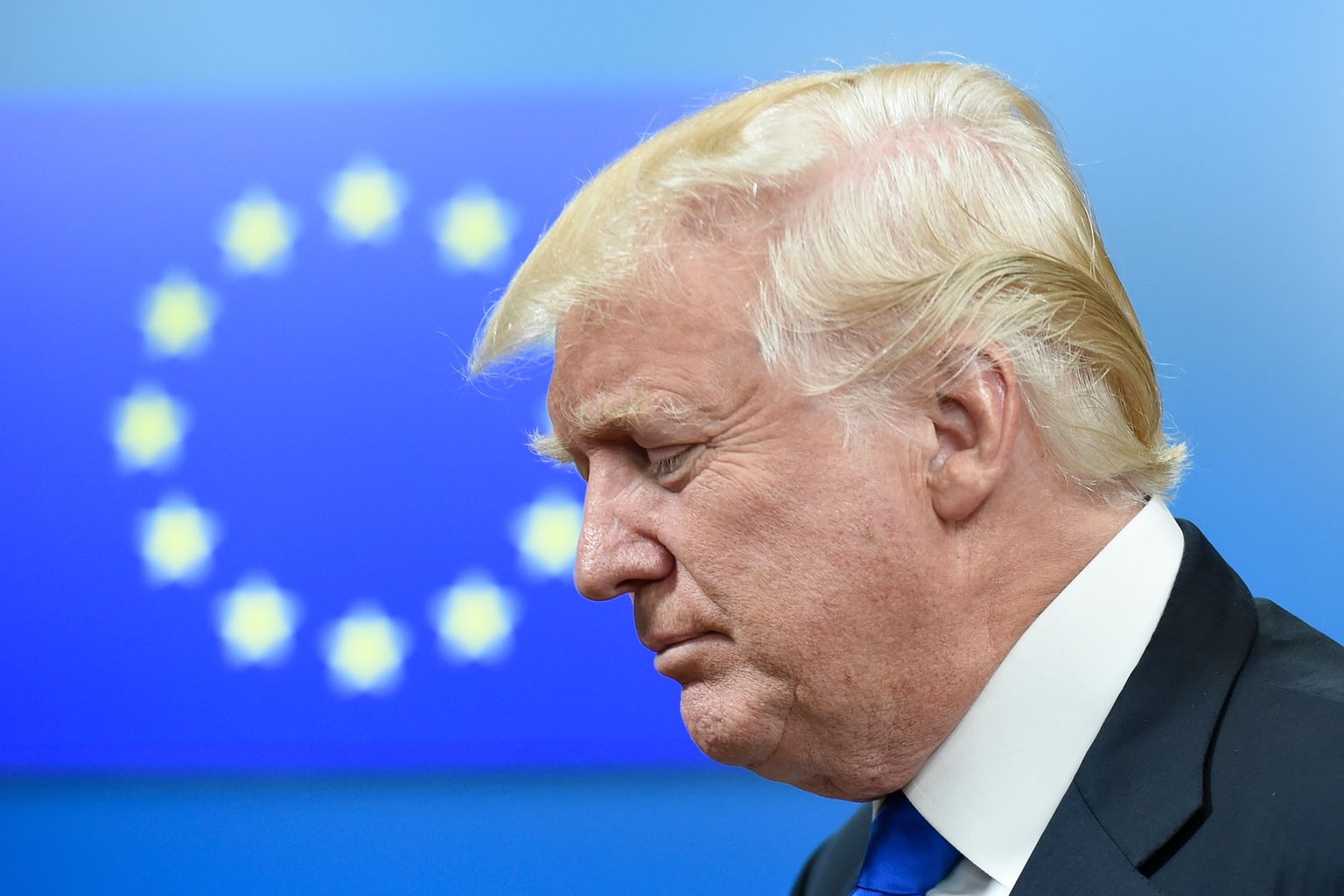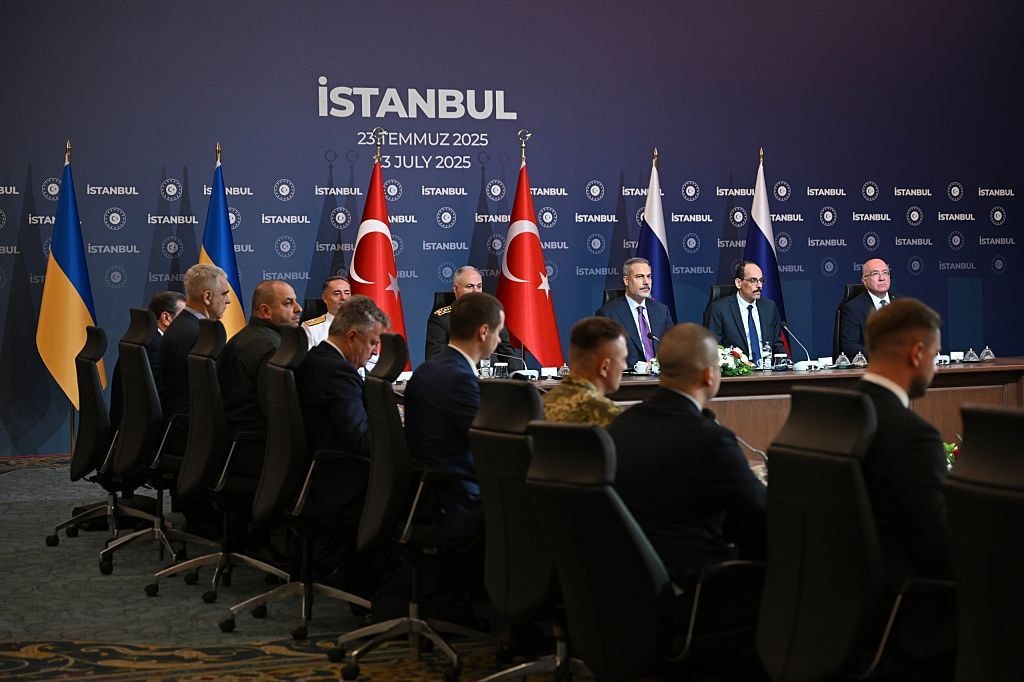
Explainer: Ukraine’s EuroMaidan was not a coup, despite Russian disinfo pushed by Musk
Protesters guard the perimeter of Independence Square in Kyiv, Ukraine, on Feb. 19, 2014. (Brendan Hoffman/Getty Images)
More than a decade after Ukraine’s pro-democracy EuroMaidan Revolution, the false — but persistent — claim that the movement was a Western-backed "coup" refuses to die.
Elon Musk on Feb. 2 boosted to his more than 215 million followers a post on X which parroted Russian disinformation, claiming without evidence that the U.S. Agency for International Development (USAID) had once been involved in toppling the Ukrainian government.
Musk, who is leading an initiative for President Donald Trump to slash government spending, has repeatedly discredited the agency in recent days and is pushing for its shutdown.
Research over the years has revealed that Russian propagandists have worked hard to spread the false narrative of a “coup” in Ukraine since 2014. With Musk taking a prominent position in the U.S. government, they now appear to have a sympathetic ear in the halls of American power.
What Russian disinformation and its promotors ignore is clear evidence that the Euromaidan Revolution was organized spontaneously by Ukrainians in a grassroots fashion.
Hundreds of thousands of people from all over the country and walks of life came together to spend three months in freezing temperatures to protest the undemocratic actions of their president and government.
Rather than being violently or illegally forced out, as the term coup used by Musk and propagandists would suggest, Ukraine’s then-president Viktor Yanukovych voluntarily fled the country to Russia after ordering his police forces to open fire on and kill civilian protestors. The subsequent transfer of power was carried out democratically through free and fair elections.


The Russian government also has a clear incentive to invalidate a pivotal moment in Ukraine’s democratic history as it represents a shift away from Russian influence.
Here’s what actually happened, and how the Kremlin has worked to obfuscate the truth.
What was EuroMaidan?
Before the EuroMaidan protests began on Nov. 21, 2013, the Ukrainian government was preparing to sign an agreement that would integrate Ukraine more closely with the EU. Yanukovych had run on a platform of improving relations with the union when he was elected in 2010.
Caving to economic pressure from Russia, Yanukovych suddenly abandoned these plans in favor of closer ties with Moscow.
Hundreds of peaceful protesters gathered in Kyiv’s Independence Square — known as Maidan Nezalezhnosti in Ukrainian — in response to Yanukovych’s decision.
An initial violent crackdown by Ukraine’s riot police on Nov. 30, 2013, only fueled the protesters, who swelled in number to hundreds of thousands over the ensuing weeks. Protests spread to oblasts across the country, particularly among students and young people, and many made their way to Kyiv to join the protests happening in the country’s capital.

As the protests continued, their demands expanded beyond European integration, and became a stand against corruption, injustice, and human rights violations, including the violent efforts by Ukrainian police to repress peaceful protests.
In January 2014, to shut down the protests, Yanukovych and the parliament implemented laws restricting freedom of speech and freedom of assembly, which were deemed “dictatorship laws” in much of Ukraine and widely denounced around the world as anti-democratic.
The protests lasted until that February, when Yanukovych ordered snipers of the Berkut special forces to open fire on protesters, killing over 100 people who are remembered as the “Heavenly Hundred.” Yanukovych fled to Russia in the immediate aftermath, and a parliament majority democratically voted to remove Yanukovych from office, calling for an early election that international observers declared free and fair.
After Yanukovych left, a raid on his home revealed a staggering level of corruption.

A photographer who was on the Maidan with protesters recalled to the Kyiv Independent on the tenth anniversary of the protests being injured by a rubber bullet while photographing snipers shooting at unarmed protesters.
"I understood that I was defending my rights, that I was standing for what they wanted to take away from me,” he said.
Why do some claim that the U.S. was responsible?
Russia seized on the events almost immediately, attempting to paint the EuroMaidan protests as a coup backed by the U.S.
In Dec. 2013, U.S. Assistant Secretary of State Victoria Nuland said in a speech at a conference organized by the non-governmental organization U.S.-Ukraine Foundation that the U.S. had invested over $5 billion in Ukraine since the end of the Soviet Union in 1991 to "ensure a secure and prosperous and democratic Ukraine." She praised the EuroMaidan movement in the same speech.
Those comments — and the U.S.’s role in coups in other countries in the past — have been used by propagandists to claim that Washington funded the EuroMaidan protests.
Despite attempts to portray it otherwise, the $5 billion spent in Ukraine was unrelated to the protests. The funds went to supporting fair elections, funding anti-corruption efforts, and developing the country’s energy infrastructure over the years.


Nuland later clarified in April 2014: “We certainly didn’t spend any money supporting the Maidan. That was a spontaneous movement, which is a far cry from what we are concerned Russia is up to now in eastern Ukraine.” At the time of her speech, Russia had already illegally invaded and annexed Crimea and was sending troops to eastern Ukraine.
Around the same time, a hacked phone call between Nuland and U.S. Ambassador to Ukraine Geoffrey Pyatt was posted on YouTube.
In the recording, Nuland and Pyatt discuss goals for Ukraine’s political future and their efforts to steer Ukrainian opposition political figures toward various positions in a new post-revolution government.
While the leak was embarrassing for the Americans and revealed the U.S. was seeking more involvement in Ukraine’s political future than it publicly let on, the contents of the call do not support Russian claims that the U.S. was involved in backing a coup.
Timothy Snyder, a professor of history at Yale University specializing in the history of Central and Eastern Europe, said a few weeks after the leak: “What that telephone conversation showed was that the Americans were, A, not up to date about what was happening in Ukraine and, B, unable to influence events happening in Ukraine.” Many of the scenarios the Americans were hoping for in the call did not end up happening, he noted.
“Imagine just how much evidence the Russians have of what the U.S. was doing in Ukraine, given that they had access to that telephone call. That was the best bit they could come up with,” Snyder also said at the time in reference to the leak.

The U.S. blamed Russia for the hack, noting that a Russian official was the first to spot and point it out online, and a transcript posted with the video was in Russian.
Nuland and Pyatt appeared once again in Russian propaganda narratives after the two were photographed offering food to the protesters in Kyiv. The gesture was intended as a show of support and solidarity for democracy after the anti-democratic violent crackdown by Ukrainian authorities. Russian commenters online used it to disparage protestors as having “sold out” to Washington.
How has Russia advanced these narratives?
Eleven years after the protests, claims that EuroMaidan was a coup continue to persist.
His Feb. 2 social media post isn't the first time Musk has pushed these narratives. In 2023, he prompted pushback from Ukrainian authorities after he posted online in reference to Ukraine that there was “no question that there was indeed a coup."
Advisor to Ukraine's Presidential Office Mykhailo Podolyak responded by telling him to read less Russian media, saying: “Enslaved societies take to the streets to rid themselves of repressive states. This is the basis of freedom, Elon Musk.
"There have never been coups in Ukraine, but there have always been free people.”
"There have never been coups in Ukraine, but there have always been free people.”
Robert F. Kennedy Jr., Trump's nominee for health secretary, also repeated the false claim that the U.S. spent $5 billion on a coup in Ukraine in an interview with far-right American political commentator Tucker Carlson in 2023.

It’s no accident these propaganda statements have taken root. Russia has carried out a coordinated campaign for years to amplify these claims.
Detector Media found that official Russian channels on social media have been claiming EuroMaidan was a coup using the propaganda tactic of “relentless repetition,” disseminating these messages on many accounts representing a variety of organizations in different countries. These comments are pushed in various languages to reach broad audiences.
These comments have also been echoed by Russian President Vladimir Putin and other high-ranking officials over the years, including just two months ago by Russia's Foreign Minister Sergey Lavrov during an interview hosted by Carlson.


